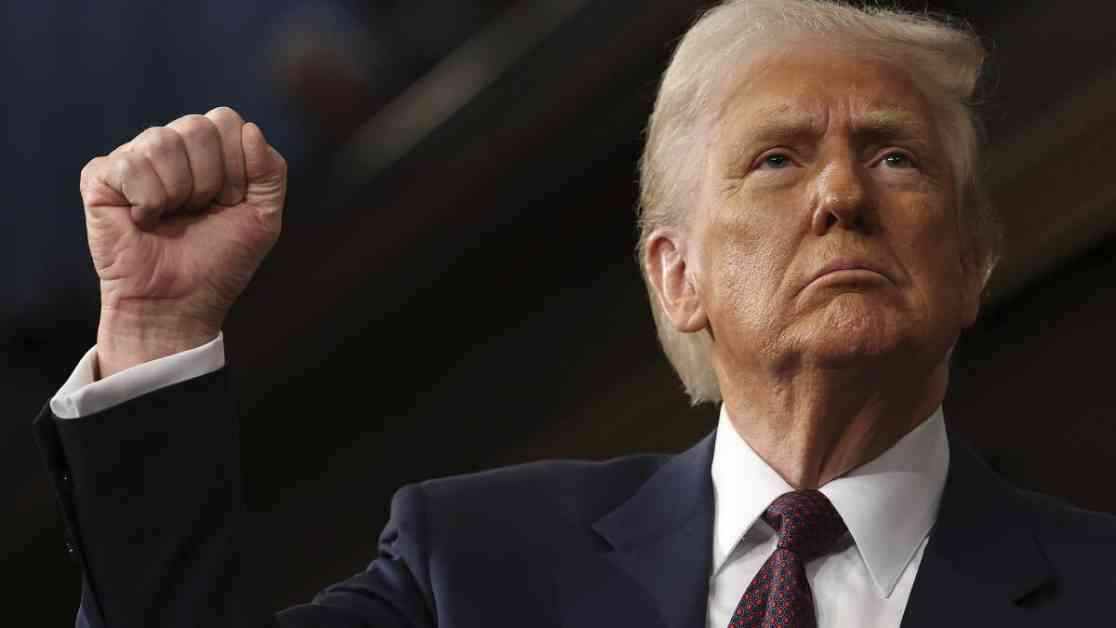President Trump’s Optimistic Self-Appraisal Versus Reality: A Closer Look
President Trump recently delivered an optimistic speech to Congress, highlighting his administration’s accomplishments in a variety of areas, including immigration, the economy, international trade, and global conflicts. He claimed that his administration had achieved more in just 43 days than most administrations do in four or eight years, emphasizing that they were only at the beginning of their journey. This confident tone was met with applause from Republicans, who largely supported his assertions.
While some of Trump’s claims can be substantiated with evidence, such as a decrease in illegal crossings at the southern border, there are other indicators that paint a more complex picture. Public polling, economic markets, court rulings, and feedback from foreign allies suggest a more nuanced view of the impact of Trump’s policies. Critics argue that his actions have disrupted core government services, caused instability in financial markets, sparked trade disputes, alienated U.S. allies, and failed to provide the desired economic relief for struggling Americans.
Sen. Elissa Slotkin of Michigan, speaking on behalf of Democrats, emphasized the importance of responsible change-making, urging that shifts in policy should not compromise the values of the nation or its democratic principles. Trump’s approach to governance, characterized by sweeping executive orders and disregard for criticisms, has faced pushback from various quarters, including federal judges.
Despite Trump’s assertion of a wide mandate for his “America first” vision, recent polling data indicates a divided public opinion on his policies. Approval ratings fluctuate, with a significant portion of the population expressing disapproval of his actions and key initiatives. The skepticism is particularly pronounced among Democrats and independent voters, highlighting the polarizing nature of Trump’s presidency.
A notable aspect of public sentiment is the concern over the direction of the country and the perceived hastiness of Trump’s decision-making. Many Americans question the strength of the union, the trajectory of the nation, and the potential repercussions of rapid policy changes. The economic landscape, immigration policies, and foreign relations are areas where opinions diverge, reflecting a broader skepticism about the efficacy of Trump’s strategies.
The international community is also closely monitoring Trump’s actions, with recent tariffs imposed on key trading partners generating backlash and retaliatory measures. Canadian Prime Minister Justin Trudeau criticized the U.S. administration for instigating a trade war that could harm ordinary Americans, emphasizing the importance of amicable relations between nations. Trump’s interactions with world leaders, such as the recent episode with Ukrainian President Volodymyr Zelensky, have raised concerns about the stability of global alliances.
Financial markets have reacted to the uncertainty surrounding trade policies, with stocks experiencing volatility and declines in response to the escalating tensions. The impact of Trump’s aggressive approach on the economy and the broader geopolitical landscape remains a subject of intense scrutiny, as experts warn of potential repercussions from protectionist measures.
As Trump navigates the complexities of governance and international relations, the public awaits further developments that could shape the trajectory of his presidency. The interplay between domestic policies, global dynamics, and public sentiment will continue to influence the narrative surrounding Trump’s leadership style and policy decisions. The evolving landscape of U.S. politics underscores the importance of a nuanced understanding of the challenges and opportunities facing the nation in the coming months.


